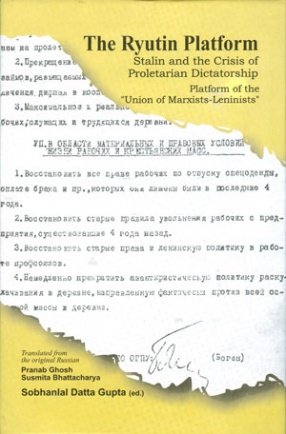Bhakti And Power: Debating India’s Religion of the Heart
Bhakti means many things to many people. It is private and public, personal and political, silently contemplative and loudly musical. Often it speaks in the marginalized voices of women and the oppressed, yet it has also played a role in perpetuating injustice. What, then, is the power of bhakti? And how does it interact with forms of power other than its own?
Bhakti and Power provides an accessible entry into these issues, presenting voices and vignettes from the sixth century to the present. It asks a range of questions. Is bhakti lower-class, middle-class, or ruler-class? Is its power intrinsically tied to music and the arts? Does it address the earth and ecology, or broker the divides between Hindus, Muslims and Jains? Does bhakti have gender and if so, how?
Each chapter is short and pointed, generating a world of its own, but each becomes a piece in a bigger puzzle. Readers will come away with new resources for thinking about bhakti and power in specific and varied situations-and also in broad and general terms. Historians, sociologists, religionists, and students of literature, politics, and the arts will all be enriched by this discussion.
Contents: Introduction: The Power of Bhakti. Situations: 1. Affect and Identity in Early Bhakti: Karaikkal Ammaiyar as Poet, Servant and Pey/Karen Pechilis. 2.Religious Equality, Social Conservatism: The Shiva-Bhakti Community as Imagined in Early Kannada Hagiographies/Gil Ben-Herut. 3. Caste and Women in Early Modern India: Krishna Bhakti in Sixteenth-Century Vrindavan/Heidi R. M. Pauwels. 4. “Are You All Coming to the Esplanade?”: Devotional Music and Contingent Politics in West Bengal/Eben Graves. 5. All the Valmikis Are One: Bhakti as Majoritarian Project/Joel Lee. Mediations: 6.The Political Theology of Bhakti, or When Devotionalism Meets Vernacularization/Christian Lee Novetzke. 7. Bhakti as Elite Cultural Practice: Digambar Jain Bhakti in Early Modern North India/John E. Cort. 8. Lover and Yogi in Punjabi Sufi Poetry: The Story of Hir and Ranjha/Manpreet Kaur. 9. Illuminating the Formless: God, King, and Devotion in an Assamese Illustrated Manuscript/Phyllis Granoff.10. Bhakti as Relationship: Drawing Form and Personality from the Formless/David L. Haberman. 11. Bhakti the Mediator/John Stratton Hawley. Solidarities: 12. Singing in Protest: Early Modern Hindu-Muslim Encounters in Bengali Hagiographies of Chaitanya/Kiyokazu Okita.13. Bhakti and Power from the Inside: A Devotee’s Reading of What Chaitanya Achieved/Shrivatsa Goswami.14. Fall from Grace?: Caste, Bhakti, and Politics in Late Eighteenth-Century Marwar/Divya Cherian. 15. The Ties That Bind: Individual, Family, and Community in Northwestern Bhakti/Tyler Williams. 16. Waterscape and Memory: The Aina-i Tirhut of Bihari Lal “Fitrat” and the Politics of a Bhakti Past/Aditi Natasha Kini and William R. Pinch. 17. Bhakti in the Classroom: What Do American Students Hear?/Richard H. Davis. Bibliography. Index.
Get it now and save 10%
BECOME A MEMBER
-

Songs of the Saints of India
-

Three Bhakti Voices: Mirabai, Surdas, and Kabir in Their Time and Ours
-

Surdas: Poet, Singer, Saint
-

Devi: The Goddesses of India
-

History, Bhakti and Public Memory: Namdev in Religious and Secular Traditions
-

Dictionary of Bhakti: North-Indian Bhakti Texts into Khari Boli Hindi and English (In 3 Volumes)







Bibliographic information
Christian Lee Novetzke
Swapna Sharma